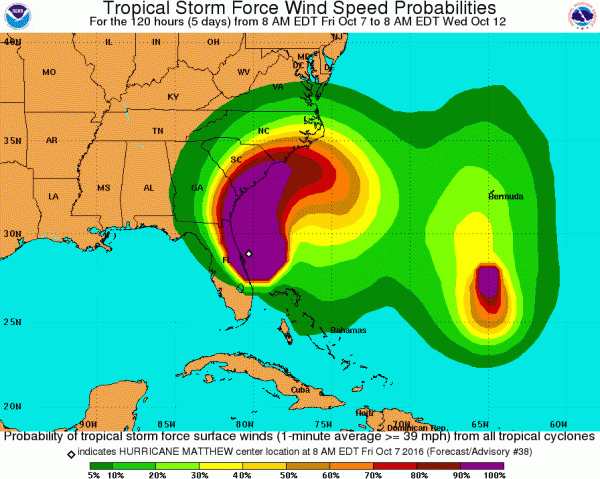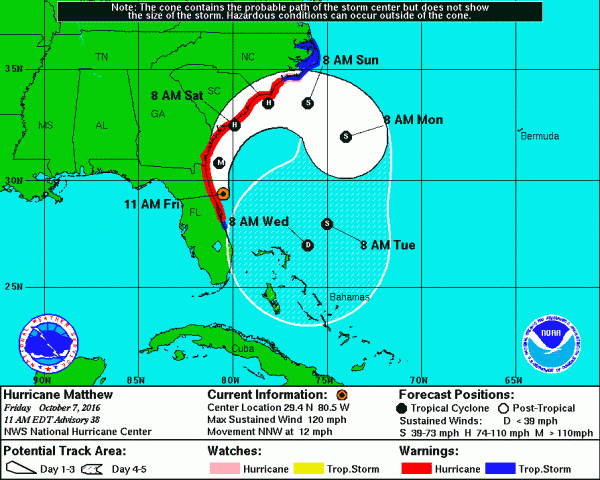I’m just gonna leave these here:
1) Here’s a Democracy Now discussion of how TV networks promote climate change denial by routinely omitting mention of climate change when covering extreme weather events like Hurricane Matthew, despite the fact that climate change is widely regarded as causing / exacerbating said events. (Also, by not asking a single friggin’ question about climate change during either of the presidential debates, or the vice presidential one.)
2) Haiti’s death toll: 1,000+. (“Cholera rampant.”) Many more to come, not just due to disease, but probable widespread starvation due to crop destruction. (Also, 17 reported deaths in the U.S.) Also undoubtedly lost were countless farmed animals, companion animals, and wild animals.
3) Colombia: unexpected defeat of landmark peace initiative due in part to depressed voter turnout due to Hurricane Matthew makes continued violence probable. (Also, Haiti’s presidential election indefinitely postponed.)
Climate change silence = death. If we don’t talk about it, we’re probably not going to act on it, and more people and animals will die. Unfortunately, many people get their climate-related news primarily from TV meteorologists, many of whom, due to ignorance [this too], arrogance [the first link again], and careerism, have abdicated their professional responsibilities and let us all down.
Every newscast should have a segment on climate change (and obviously not a denier one), and also every report on extreme weather conditions. And climate change should also be discussed in the context of agriculture, tourism, sports, and other weather-dependent activities. And OF COURSE it should be discussed by every political candidate, and not just in passing.
All with the goal of increasing everyone’s awareness and understanding of the problem, and motivation to address it.
The meteorologists’ abdication just increases the burden for the rest of us. So please: do your bit to help get the word out. Telling your local news station you want more climate change coverage would be a great start.
Some links:
*To help Haiti do NOT donate to the Red Cross, which was revealed to be grossly ineffective at best in this ProPublica report entitled, “How the Red Cross Raised Half a Billion Dollars for Haiti and Built Six Homes.” Instead, donate to Partners in Health (Dr. Paul Farmer’s org), which gets high marks from GiveWell and other charity monitors.
And donate to the Humane Society to help Haiti’s animals.
Please list other vetted suggestions for donations in the comments.
*For more info on climate change politics and economics, read Naomi Klein’s brilliant This Changes Everything.
*Oxford scientists say veggie diets could save up to 8 million lives by 2050 due to climate and public health gains. (Not including the animal lives!) “It could also avoid climate-related damages of $1.5 trillion (US).”
And, finally,
*Support climate activists, with funds, kind words, letters to the editor, etc. Here are some that are kicking ass.
EDIT: Cermet points out: “AGW is also at the heart of the terrible drought that has devastated Syria (major cause of its civil war) and much of that area of the world – see Iran’s eight year drought.”
And per Brachiator: “Also recommend Three Angels. The spouse of a local radio personality works for this organization and flew back home just ahead of the hurricane. They do good work, and are close to the ground. They employ local people instead of dropping down as “the experts” on local conditions.”



